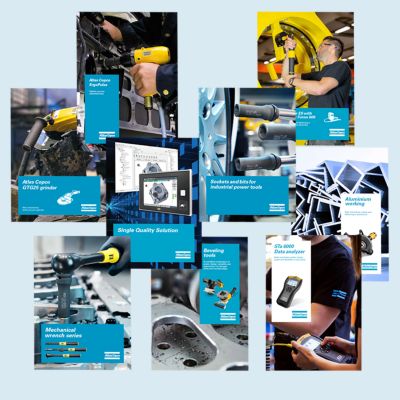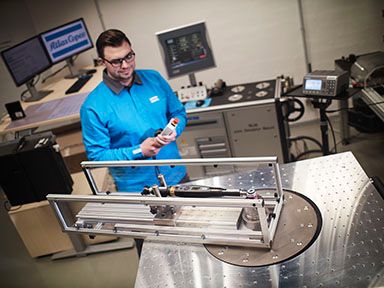Are you wondering which air motor is right for your application? Check out this guide to choosing the correct air motor and Atlas Copco’s air motor selection tool.
Air motors are reliable, versatile, and rugged power units that can suit the needs of many industrial applications.
Meet the air motor
If you’ve already decided an Atlas Copco pneumatic motor is the right choice for a given application, Atlas Copco has created a helpful and easy-to-follow set of rules you can use to narrow down the exact right pneumatic motor for your needs.
Once you’ve decided that an air motor is the best choice for your application, the first thing to consider is that it is highly probable that a variety of different air motors could run at your application’s working point. This is because pneumatic motors have a wide operating range thanks to their adjustable torque output and variable speeds.

Torque speed curve
Considering this, your choice of motor will be influenced by where your application’s working point is on the torque-speed curve.
It is most efficient to run the motor at a maximum power speed, so selecting one that produces maximum power as close to the working point as possible will give you the smallest possible loss of efficiency. This air motor would also ensure the lowest air consumption for a given power output.
You should also be aware that if the air motor's stable speed is important, it would be wise to avoid working with speeds below the maximum power point. This ensures there is some “reserve power” in the event of a load increase. It also helps prevent the loss of efficiency mentioned above. If there is any uncertainty about the torque demands of an application, it is a good idea to work closer to the idling speed.
Other considerations include the fact that low-speed and high-torque motors put a high load on the gears. Low-speed and high-torque motors also result in low vane ware and lower levels of air consumption.
In contrast, high speeds affect the lifetime of the vanes. However, these motors put less strain on the gears.
Finally, if a very long lifetime is required for your application, your best bet for air motors will be to choose a large motor that is restricted to or run at a low pressure.
To further help you narrow down which air motor is best for you, we have created an easy-to-use Atlas Copco air motor selection tool. Just input the working point requirements of your industrial application and allow our selection tool to point you toward the most suitable Atlas Copco pneumatic motor from our range of products.
From there, you can further explore our line of pneumatic motor products on our website.






